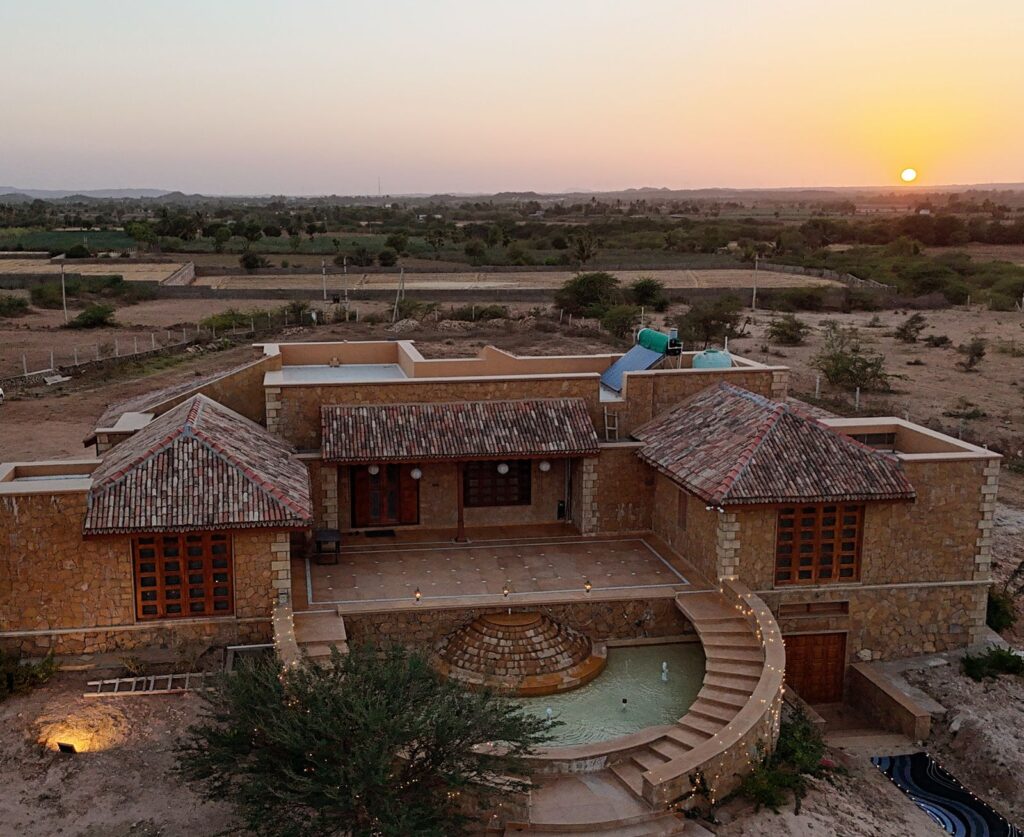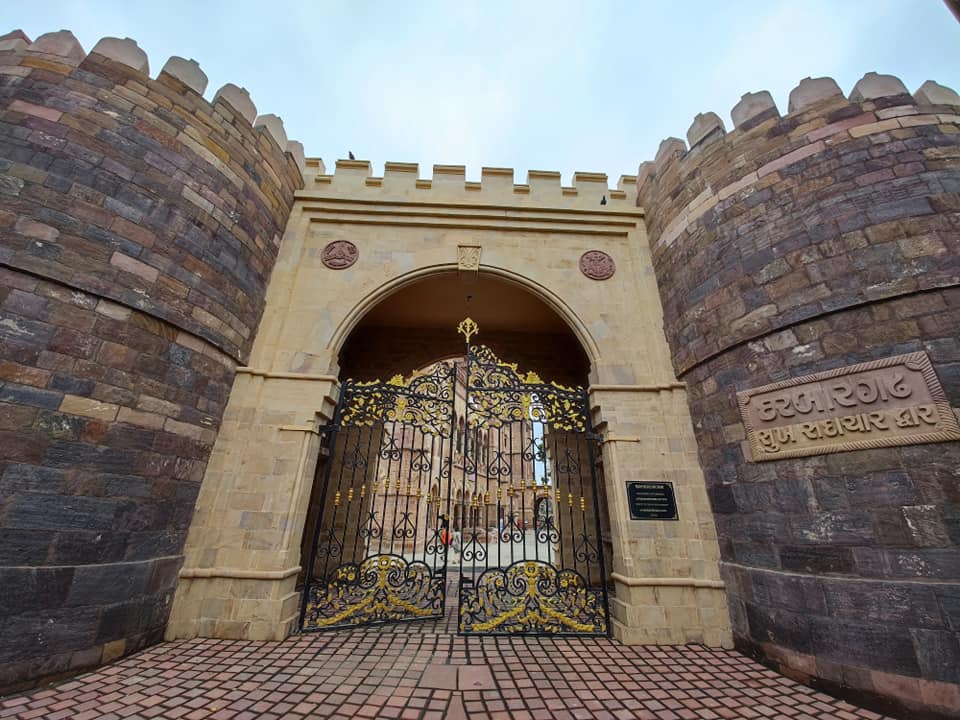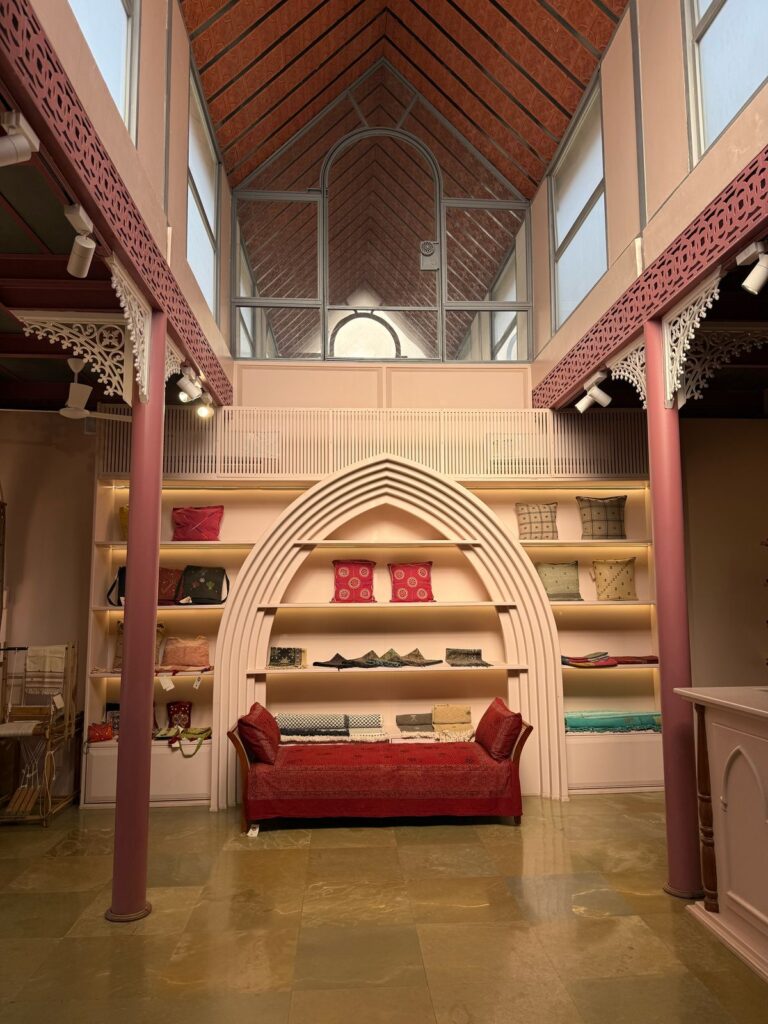
Contemporary design
- Shriraj suggests exploring new construction techniques using Materials-Wood & stone instead of bamboo & mud
- Incorporate a mix of contemporary and vernacular elements in designs, focusing on the context and user experience rather than just following architectural styles.
- Collaborate with structural engineers and other experts as a cohesive team to create holistic architectural designs.
Shriraj’s Architectural Journey
His family background is in construction and his exposure to the 2001 earthquake in Bhuj. He graduated from Nirma University and worked in Venice before the COVID-19 pandemic. He worked on the organic process of developing a niche in architecture, emphasizing the importance of making the most out of every project and learning from each experience.
He emphasized on the dynamic nature of architecture in Bhuj, with many young designers contributing to the booming design scene.
Evolution of Architecture in India
- Akash inquires about the evolution of architecture in India, particularly in the context of the COVID-19 pandemic and the mid-2020s.
- Shriraj highlights how architecture has evolved with changing times, influenced by advancements in materials and globalization.
- He discusses the unique characteristics of Bhuj, including its historical significance, major ports, and reverse migration trends. He emphasizes the importance of understanding the context and community when designing in Bhuj, Gandhidham highlighting the region’s dynamic and welcoming nature.
Experiential Architecture
- It is about creating spaces that evoke emotions and attachments through sensitive design. Shriraj explained that experiential architecture is about designing spaces that resonate with users on a deeper level, beyond just aesthetics. He shared his experience working with master architect Giovanni Leone in Venice, which influenced his understanding of experiential architecture
- He discussed the importance of balancing modern materials with traditional techniques to create durable and sustainable designs

Sustainable Materials and Design
Akash asked about sustainable materials, and Shriraj emphasized the importance of using locally sourced materials to ensure sustainability. He explained that sustainability has become a luxury and a lifestyle, requiring efficient design and resource management.
Shriraj shared his approach to using natural materials like stone and wood, which are both aesthetically pleasing and environmentally friendly.
- He discussed the balance between modern materials and traditional techniques, highlighting the importance of adapting to local conditions and resources.

Collaboration and Technology in Architecture
Akash inquires about best ways for collaboration in the architecture industry, and Shri Raj highlights the positive impact of technology on collaboration among architects, engineers, and designers.
Shriraj explained that younger generations are more open to collaboration and learning from each other, which is essential for evolving the field of architecture.
He discussed the importance of staying updated with market trends and new materials, emphasizing the need for continuous learning and adaptation.
He shared his experience of collaborating with designers from different regions, which enriches his understanding of architecture and design.
Trends and Future of Architecture
Akash asked about future trends in architecture, and Shriraj emphasized the importance of being sensitive to local contexts and practical needs.
He discussed the resurgence of natural materials like wood and cane in contemporary design, highlighting their aesthetic and functional benefits.
He shared his approach to staying updated with market trends by attending conferences, exhibitions, and engaging in conversations with industry peers.
- Shriraj emphasizes the need for architects to be well-informed about various sectors and industries to create innovative and sustainable designs.
Projects and Learning Experiences
Akash asked about Shriraj’s projects, from residential to Commercial and Shriraj shared his diverse experience, including temple architecture, private residences, commercial spaces, and historical monument restoration.
Shriraj highlights the importance of being a “Jack of all trades” in architecture, as each project offers unique learning opportunities.
He has worked in different regions, including Rajasthan, Gujarat, Sicily, and Catania, and how each project has contributed to his growth as an architect.
He emphasized the importance of adapting design principles from one project to another, creating a cohesive and evolving body of work.


Advice for Budding Architects
What are the tips for budding architects?
- To know their calling and be passionate about their work.
- The importance of setting ego aside and focusing on meeting client needs and creating successful projects.
- Prioritize design quality over commercial gains as good architecture will naturally lead to financial success.
He highlights the importance of collaboration and continuous learning, encouraging budding architects to seek out diverse experiences and mentorship opportunities.
Overview
In the live podcast titled “The Future,” Akash Bindal, founder of Reldor Lifestyles, interviews architect Shriraj about the evolution of architecture in India, particularly in Bhuj. Shriraj discusses his journey from Nirma University to working in Venice, emphasizing the importance of experiential architecture, sustainability, and collaboration. He highlights the use of natural materials and the dynamic nature of Bhuj’s architecture, influenced by its historical significance and trade. Shriraj advises budding architects to know their calling, set aside ego, and focus on client needs rather than commercial gains. He also stresses the importance of continuous learning and adapting to new materials and trends.
